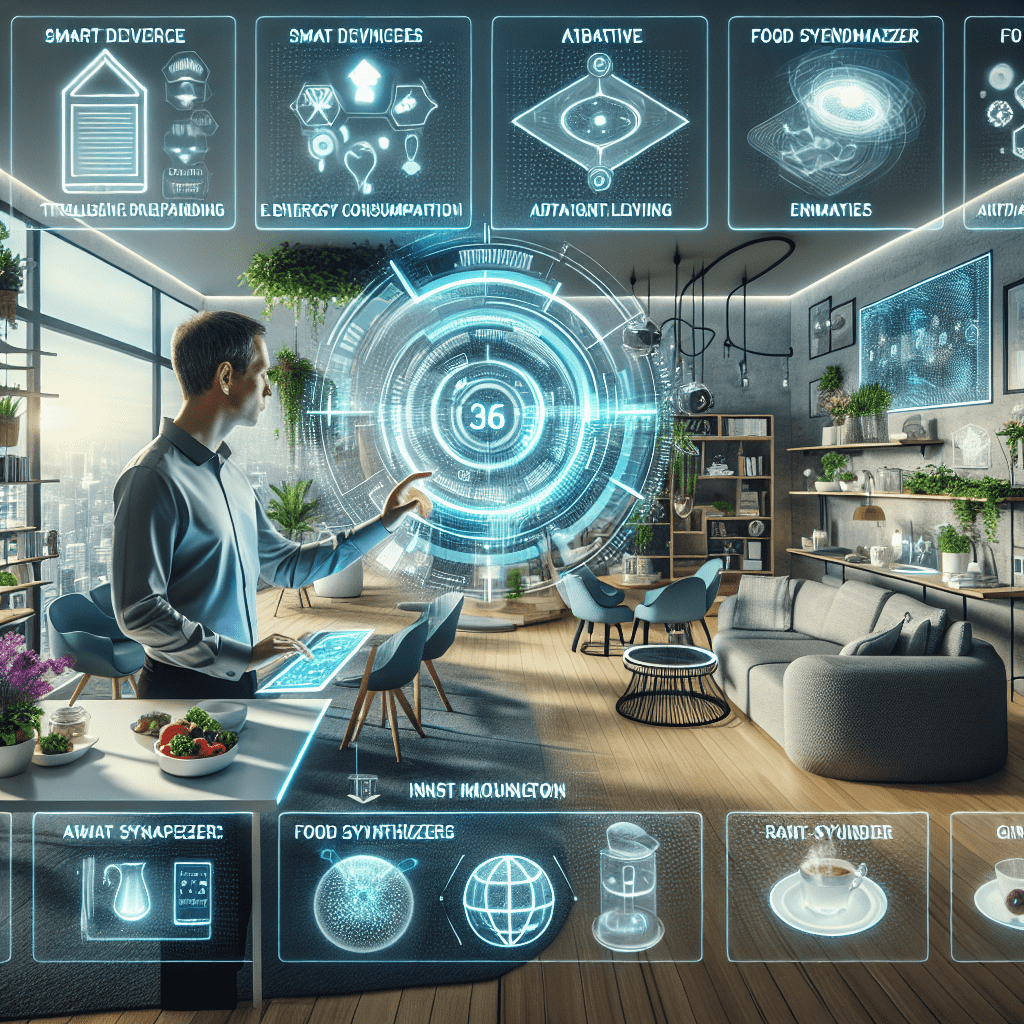In today’s fast-paced world, the way we live is constantly evolving. From advancements in technology to changes in lifestyle trends, our homes have become more than just a place to live – they have become a reflection of who we are and how we choose to live our lives. The future of home living is an exciting prospect, with new innovations and technologies set to revolutionize the way we interact with our living spaces. In this article, we will explore some of the key trends shaping the future of home living and how they are set to change the way we live.
The Rise of Smart Homes
One of the most significant trends in home living is the rise of smart homes. Smart home technology allows homeowners to control various aspects of their homes, such as lighting, heating, security, and entertainment, through their smartphones or other devices. This technology not only adds convenience to our lives but also enhances the overall efficiency and comfort of our homes.
Smart home devices such as smart thermostats, smart lighting systems, and smart security cameras are becoming increasingly popular, allowing homeowners to customize their living spaces to suit their preferences. For example, a smart thermostat can learn your heating and cooling preferences and adjust the temperature of your home accordingly, while smart lighting systems can be programmed to create the perfect ambiance for any occasion.
Sustainable Living
Another important trend in home living is the focus on sustainability. With the growing concern over climate change and environmental degradation, more and more homeowners are looking for ways to reduce their carbon footprint and live more sustainably. This trend is driving innovation in areas such as energy-efficient appliances, solar panels, and eco-friendly building materials.
By embracing sustainable living practices, homeowners can not only reduce their impact on the environment but also save money on utility bills in the long run. For example, energy-efficient appliances consume less electricity, while solar panels can generate clean, renewable energy for your home. Eco-friendly building materials such as bamboo flooring and recycled glass countertops are also gaining popularity for their durability and sustainability.
Flexible Living Spaces
In today’s fast-paced world, the way we live and work is constantly changing. As a result, the demand for flexible living spaces that can adapt to our evolving needs is on the rise. From multi-functional furniture to modular living spaces, homeowners are looking for ways to maximize the use of their homes and create spaces that can serve multiple purposes.
One popular trend is the use of convertible furniture, such as sofa beds and folding tables, that can transform a living room into a guest bedroom or home office in a matter of minutes. Modular living spaces, such as tiny homes and prefabricated houses, are also becoming increasingly popular for their flexibility and affordability. These spaces can be easily customized to suit the needs of the homeowner and can be easily expanded or downsized as needed.
Conclusion
The future of home living is an exciting prospect, with new innovations and technologies set to revolutionize the way we interact with our living spaces. From smart homes to sustainable living practices to flexible living spaces, homeowners are embracing new ways of living that prioritize convenience, efficiency, and sustainability. By staying informed about the latest trends and innovations in home living, homeowners can create spaces that not only reflect their personal style and preferences but also enhance their overall quality of life.
FAQs
What are smart homes?
Smart homes are houses equipped with technology that allows homeowners to control various aspects of their homes, such as lighting, heating, security, and entertainment, through their smartphones or other devices.
How can I live more sustainably?
There are many ways to live more sustainably, such as using energy-efficient appliances, installing solar panels, and using eco-friendly building materials in your home.
What are flexible living spaces?
Flexible living spaces are areas in the home that can adapt to your changing needs, such as multi-functional furniture and modular living spaces that can be easily customized and expanded.
TIP:
When designing your home, consider incorporating elements of smart home technology, sustainability, and flexibility to create a living space that is both functional and stylish.
#Revolutionizing #Live #Future #Home #Living
